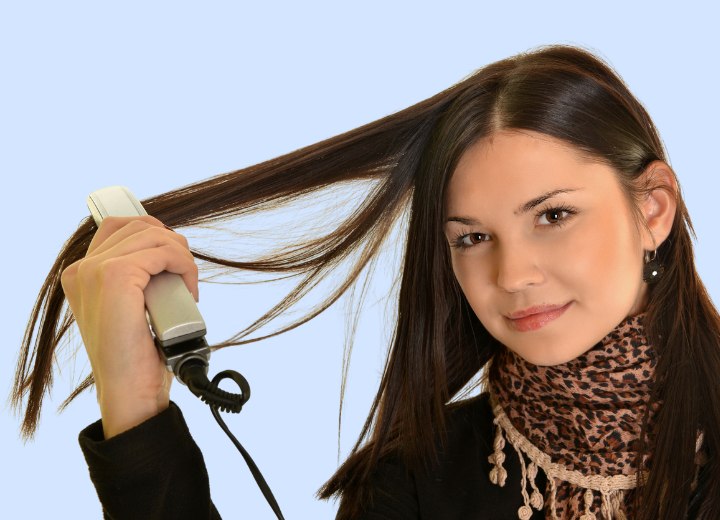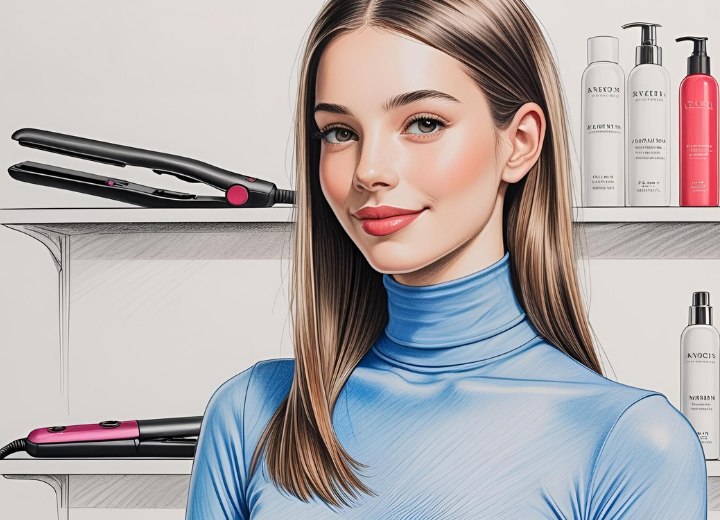Straightening and Oily Hair

A: This is actually an issue that many people experience when switching to straightened hair, and there are several interconnected reasons why your hair becomes oilier after flat ironing.
However, the bigger issue lies in how straightening fundamentally changes your hair's relationship with your scalp. When your hair has its natural texture, whether it's wavy or curly, that texture creates lift and volume at the roots. This natural lift allows air to circulate freely around your scalp, helping to keep it cool and dry while preventing oils from immediately transferring to your hair strands.
When you straighten your hair, you're removing all that natural volume and texture, causing your hair to lie completely flat against your head. This creates what's essentially a seal against your scalp, trapping heat and moisture while reducing air circulation. Think of it like wearing a tight-fitting cap. Your scalp gets warmer, starts producing more oil and sweat in response to the increased temperature, and has nowhere for that excess oil to go except directly onto your hair.
The lack of air circulation also means that any oils your scalp does produce get absorbed directly into your hair, starting at the roots and gradually working their way down the hair shaft throughout the day. This is why you might notice that your hair looks fine right after straightening but becomes progressively greasier as the hours pass.

To combat this issue, start by reassessing your hair products. You might be using too much heat protectant, or the type of product you're using might be too heavy for your hair type. Try switching to a lighter, silicone-free heat protectant. Look for products that are specifically labeled as "lightweight" or "for fine hair," even if your hair isn't particularly fine. These products tend to be less likely to cause buildup.
Consider incorporating a clarifying shampoo into your hair care routine to remove product buildup. These shampoos are stronger than regular shampoos and can help strip away the accumulated oils and silicones that might be contributing to the greasy appearance. However, don't use them every day, as they can be drying if overused.
You might also want to experiment with your flat ironing technique. Try not to make multiple passes over the same section of hair, as this increases heat exposure and can worsen the oil production issue. Use the lowest effective temperature for your hair type, and consider straightening your hair in smaller sections to ensure you're not having to go over areas repeatedly.
Some trial and error might be needed to find the right combination of products and techniques that work for your specific hair type and scalp. What works for one person might not work for another, so don't get discouraged if the first adjustments you make don't completely solve the problem right away.
©Hairfinder.com
See also:
Causes and treatments for oily hair
Are people with long hair more prone to having oily hair?
What are good hairstyles to hide oily hair?
Is a short haircut with volume a good solution against oily hair?